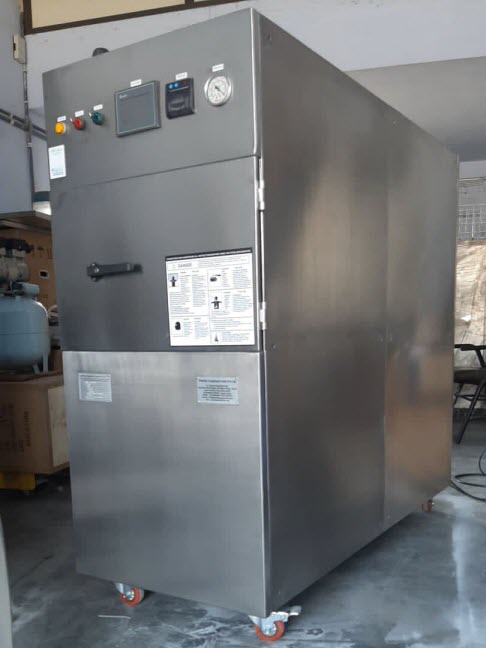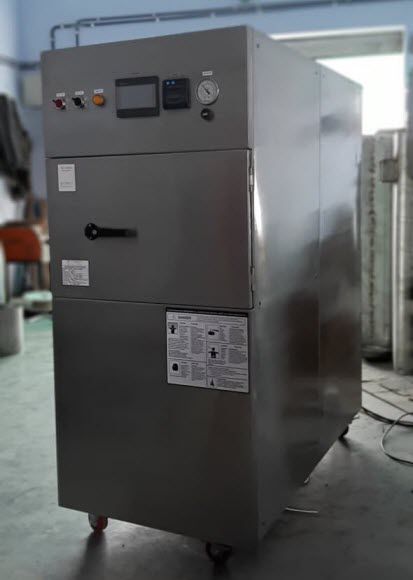In the fast-paced and ever-growing food industry, ensuring food safety and quality is of utmost importance. One crucial aspect that plays a vital role in achieving this is the utilization of sterilization equipment. Sterilization equipment helps eliminate harmful bacteria and microorganisms, extending the shelf life of food products while maintaining their taste and quality.
In the food and beverage industry, sterilization is a crucial practice that is designed to kill or disable microorganisms. It also extends the shelf life of products. This helps ensure a safe and healthy product for consumers.
Types of Sterilization Equipment
There are several types of sterilization equipment utilized in the food industry. These can be categorized into heat-based methods, chemical-based methods, and radiation-based methods. Heat-based methods include steam sterilizers and hot water baths, which effectively kill microorganisms through high temperatures. Chemical-based methods, such as chlorine and hydrogen peroxide, utilize specific compounds to disinfect surfaces and equipment. Radiation-based methods involve the use of UV sterilizers or gamma irradiation to destroy microorganisms through exposure to specific wavelengths or radiation.

Sterilization Equipment in the Food Industry
Sterilization equipment finds applications throughout various stages of food processing, packaging, and storage. In processing facilities, equipment such as autoclaves and retort systems utilize high-pressure steam to sterilize canned and packaged foods. Packaging materials, including bottles, containers, and closures, can be sterilized using chemical-based methods like hydrogen peroxide vapour or chlorine solutions.
During transportation, sterilization equipment ensures that food products remain safe and uncontaminated. Trucks, containers, and storage areas can be equipped with UV sterilizers or other disinfection methods to maintain a sterile environment during transit.
It is crucial for food producers to adhere to regulatory standards and guidelines regarding sterilization practices. Compliance with these regulations not only ensures the safety and quality of food products but also helps maintain consumer trust and avoid legal repercussions.

Benefits of Sterilization Equipment in the Food Industry
The utilization of sterilization equipment in the food industry offers numerous benefits:
1. Elimination of Harmful Bacteria and Microorganisms
Sterilization equipment plays a crucial role in eliminating harmful bacteria and microorganisms that can contaminate food. By effectively destroying these pathogens, the risk of foodborne illnesses is significantly reduced, ensuring the safety of consumers.
2. Prolonged Shelf Life of Food Products
Proper sterilization techniques help extend the shelf life of food products. By eliminating or reducing the presence of spoilage-causing microorganisms, the rate of food spoilage is slowed down, allowing for longer storage and distribution periods.
3. Prevention of Foodborne Illnesses
Contaminated food can cause severe illnesses and pose a significant risk to public health. Sterilization equipment acts as a preventive measure by eradicating pathogens that could potentially cause foodborne illnesses, safeguarding consumers from the detrimental effects of consuming contaminated food.
4. Maintenance of Product Quality and Taste
Sterilization equipment is designed to preserve the quality and taste of food products. By targeting and eliminating harmful microorganisms while minimizing the impact on the nutritional value and sensory characteristics of the food, sterilization ensures that consumers receive products that meet their expectations.
Frequently Asked Questions
1. What are the different types of sterilization equipment used in the food industry?
A. In the food industry, sterilization equipment can be categorized into three main types: heat-based methods, chemical-based methods, and radiation-based methods. Heat-based methods include steam sterilizers and hot water baths. Chemical-based methods involve the use of compounds like chlorine and hydrogen peroxide. Radiation-based methods use UV sterilizers or gamma irradiation.
2. How does sterilization equipment benefit the food industry?
A. Sterilization equipment offers several benefits to the food industry. Firstly, it helps eliminate harmful bacteria and microorganisms, reducing the risk of foodborne illnesses. Secondly, it extends the shelf life of food products by eliminating spoilage-causing microorganisms. Additionally, sterilization equipment helps maintain the quality and taste of food products by minimizing the impact on their nutritional value and sensory characteristics.
3. Where is sterilization equipment used in the food industry?
A. Sterilization equipment finds applications throughout various stages of food processing, packaging, and storage. In processing facilities, autoclaves and retort systems are used to sterilize canned and packaged foods. Packaging materials such as bottles and containers can be sterilized using chemical-based methods. During transportation, sterilization equipment can be installed in trucks, containers, and storage areas to maintain a sterile environment.
4. Why is adherence to sterilization regulations important in the food industry?
A. Adherence to sterilization regulations is crucial in the food industry for several reasons. Firstly, it ensures the safety and quality of food products by following established guidelines and standards. Secondly, compliance with regulations helps maintain consumer trust in the industry. Finally, it helps food producers avoid legal repercussions and penalties associated with failing to meet sterilization requirements.
5. How does sterilization equipment prevent foodborne illnesses?
A. Sterilization equipment acts as a preventive measure against foodborne illnesses by eliminating pathogens that can contaminate food. Pathogens, such as bacteria and viruses, can cause severe illnesses if consumed. Sterilization equipment effectively destroys these pathogens, reducing the risk of contamination and safeguarding consumers from the detrimental effects of consuming contaminated food.





